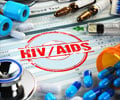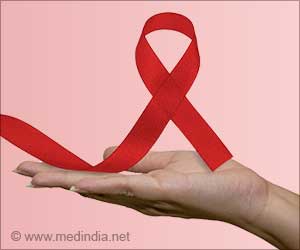Study done by the UCLA AIDS Institute show the reasons behind the increase in AIDS and HIV cases among the Hispanic group in Los Angeles.
Los Angeles is the second largest AIDS capital in the United States. The Aids epidemic has shifted largely to the Hispanics. However its been found that primary care practitioners serving this segment of the population are often failing to offer either HIV testing or safer sex advice to their patients, according to a new UCLA AIDS Institute study. Hence AIDS cases continue to rise among the Hispanic group at an alarming speed.
The study, published in the March issue of the Journal of the National Medical Association, found that only 41 percent of these primary care providers — including doctors, nurse practitioners and physician assistants — surveyed between March and June 2004 had regularly offered advice about sexually transmitted infection or safe sex to patients during the prior six months. Only 36 percent had offered more than 20 HIV tests during the same period, despite a recommendation by the Centers for Disease Control in 2001 that physicians in high HIV–prevalence areas routinely offer HIV testing to their patients."What this study shows is that despite the number of new AIDS cases increasing among Hispanics in Los Angeles County, the primary care providers do not appear to be increasing their offering of HIV testing to the patients," said Dr. Rosa Solorio, assistant professor of family medicine at the David Geffen School of Medicine at UCLA and a co-author of the study.
The providers served in primarily Hispanic communities, and 57 percent reported that they spoke Spanish with the majority of their patients.
Statistics from the Los Angeles County Department of Health show that between 1992 and 2004, the percentage of new AIDS cases among the Hispanic population rose steadily each year, making Hispanics the group with the highest proportion of new AIDS cases in the county.
The study was conducted by Dr. Mitchell Kushner as part of his master's thesis at the UCLA School of Public Health. Solorio, who is also a member of the UCLA AIDS Institute, served as Kushner's thesis advisor. Kushner is now the county Department of Health's medical director for Service Planning Area 3, which includes the San Gabriel and Pomona valleys. Solorio's research is supported by the Robert Wood Johnson Foundation, the National Institute of Mental Health, and the UCLA Pacific AIDS Education and Training Center.
Kushner and Solorio also found that the white physicians surveyed were less likely than their Hispanic, Asian or African American counterparts to take a patient's sexual history. Overall, 59 percent of the providers surveyed were male; 25 percent were white, non-Hispanic; 27 percent were Hispanic; 9 percent were African American; 33 percent were Asian or Pacific Islander; and 6 percent listed themselves as "other."
Advertisement
"We really have to improve the sexual history–taking skills of our primary care providers, and we have to work more intensely with the larger percentage of providers, who are white," Kushner said.
Advertisement
According to the county Health Department, the majority of Hispanics diagnosed with AIDS tested HIV-positive less than one year prior to their AIDS diagnosis. Thus, the challenge to providers practicing in predominantly Hispanic communities appears to be early HIV detection.
Los Angeles is the second-largest epicenter for AIDS cases in the United States, behind only New York City, Solorio noted.
The racial and ethnic distribution of AIDS cases differs markedly between Los Angeles County and the rest of the country. According to data from the county Health Department, Hispanics represented the largest racial/ethnic group diagnosed with AIDS in Los Angeles County in 2004, at 48 percent, while Hispanics accounted for 19 percent of all persons diagnosed nationally.
Source-Eurekalert
R.S










